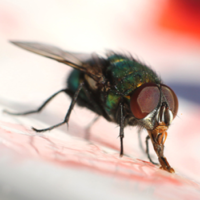A globalized food supply has put food safety front and center. Contaminated food regularly makes global headlines and constantly forces government agencies to rework regulations. Yet the risk isn’t just microbes or spoiled products. Food allergies are on the rise around the world, and it’s crucial for food manufacturers to be more vigilant than ever to prevent allergen-related contamination.
Unfortunately, the presence of allergens in food is largely unintentional—meaning human error and unclean equipment are frequently the culprits. As tempting as convenience and speed can be, it is never an excuse for carelessness. A food manufacturer can minimize the risk of tainted food products with the right allergen control plan.
What Are the Biggest Risks to Consumers?
Anyone in your facility—both in food manufacturing itself and food storage—should know the eight most common allergens by heart. By being familiar with them, you are far likelier to spot potential problems and cross-contaminations. Nine out of 10 serious allergic reactions can be traced to the following eight ingredients:
- Soy
- Wheat
- Eggs
- Milk
- Peanuts
- Tree nuts
- Fish
- Shellfish
What’s more, a food product does not have to consist primarily of any of the eight allergens to be lethal. The ingredients above in any amount can pose a serious health hazard to a person with allergies. As such, part of any food manufacturing facility’s allergen control plan should include a comprehensive look at all food ingredients used and an evaluation of how and where they can be found.
Other common, although generally less severe, allergens include fruits and vegetables. In general, produce allergies are related to pollen allergies and are referred to as “cross-reactivity.” Further, the risk of allergies from this group is less severe, as cooking and processing can often eliminate the likelihood of a reaction.
Potentially Deadly Consequences
When a person with allergies comes into contact with an allergy-inducing ingredient, the symptoms can range dramatically. For some, it’s an uncomfortable inconvenience—but for others, it can be downright debilitating.
According to the Mayo Clinic, symptoms can develop within minutes of consumption, or as late as 2 hours after eating. Among the less severe symptoms:
- Mouth discomfort, such as tingling or itching
- Skin hives and itching
- Swelling, largely in the face but also elsewhere on the body
- Difficulty breathing, with wheezing and nasal congestion
- Gastrointestinal problems, such as pain, vomiting or diarrhea; general nausea
- Dizziness
While the more serious symptoms are less common, they can be life threatening nonetheless. Anaphylaxis refers to a severe allergic reaction, with symptoms including:
- Intense difficulty breathing and constriction of airways
- Swelling in the throat—which patients say can feel like a lump or obstruction
- A severe drop in blood pressure that can lead to shock
- Rapid heartbeat
- Dizziness or loss of consciousness
As you can see, the consequences of allergen-contaminated food can be just as bad—if not worse—than microbial contamination.
The Elements of a Comprehensive Allergen Control Plan
Now, you understand the risks of a lax allergen strategy. To protect yourself and the consumer, it is absolutely crucial to form a comprehensive control plan. Here are a few starting points:
- Have a thorough supplier review your plan in place. A certificate of analysis should be provided by suppliers of raw ingredients and processed ones. This should give you plenty of information that is useful for sorting and storing, as allergens will be listed.
- Map out a smart traffic flow plan for your facility. In some facilities, conveyor belts might cross paths and create an unnecessary risk for the foods being transported.
- Sanitation is critical. For purposes of food allergens, this goes well beyond steps traditionally taken to kill microbes. Solid substances and residues on cleaning or handling equipment can cross-contaminate food products. Wet cleaning is necessary to reduce risk.
- Equipment scheduling can further reduce that risk. For example, a food with no allergens should be handled prior to products with them. Also, cleaning should take place in between uses, regardless.
- Color-coding in food storage can simplify efforts to monitor allergens. A blanket “allergen” label can go a long way toward alerting all product handlers that extra care should be taken.
- Similarly, food products with allergens should be sectioned off from other foods with a physical barrier. Ideally, a different room or facility will be used.
- Whatever plan you use, it should be subject to regular scrutiny. Every process should be evaluated and re-evaluated to ensure you’re being smart. Maintain thorough documentation of all activities—including how products are handled, how they are stored and how equipment is maintained and cleaned. Monthly internal audits can keep you from becoming complacent.
- At the end of the day, awareness is everything. Every person in your facility should be well aware of the dangers of allergen contamination. Employees should know what to look for, and they should understand the consequences of cutting corners.
With the right plan in place, you can save lives. An allergen control strategy will ensure that your consumers are safe from harm and that your business minimizes the risk of liability.
Chris Bekermeier is the vice president of marketing at PacMoore. PacMoore is a food contract manufacturer that offers food processing and packaging services.




